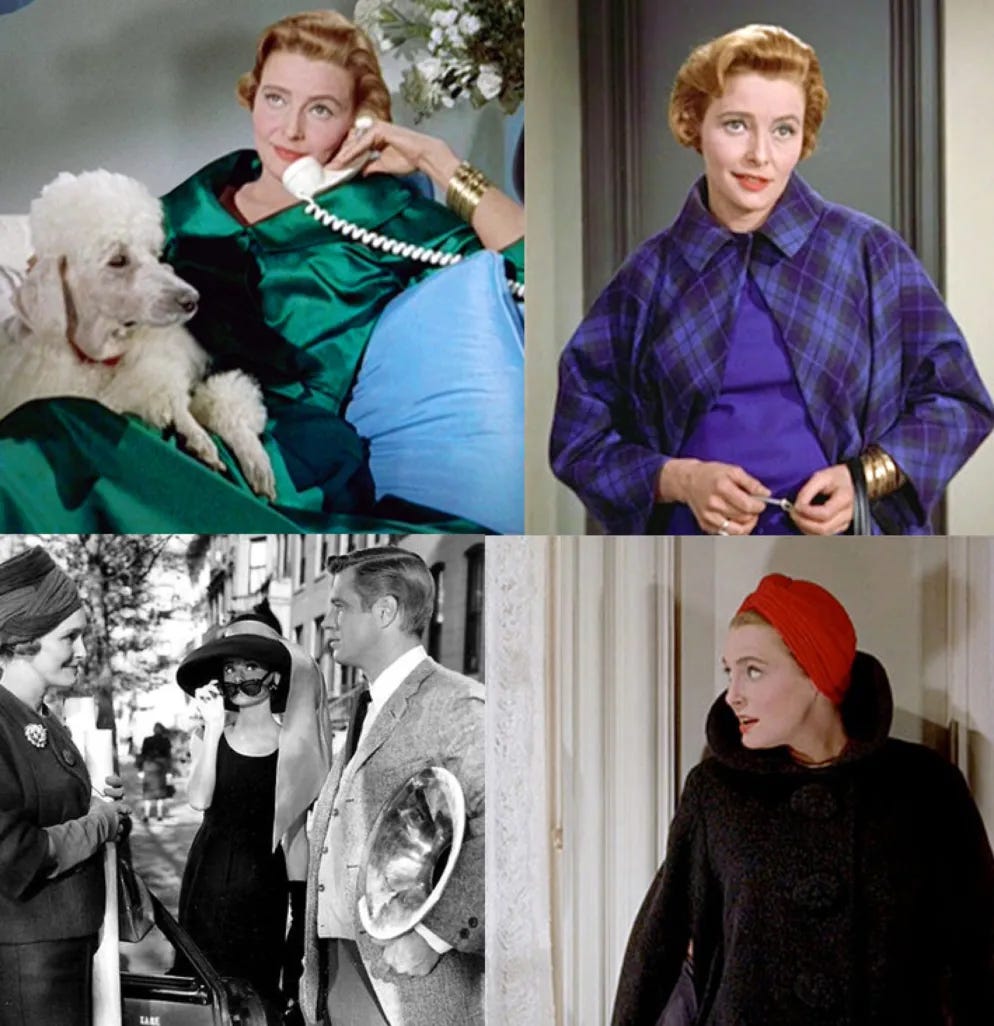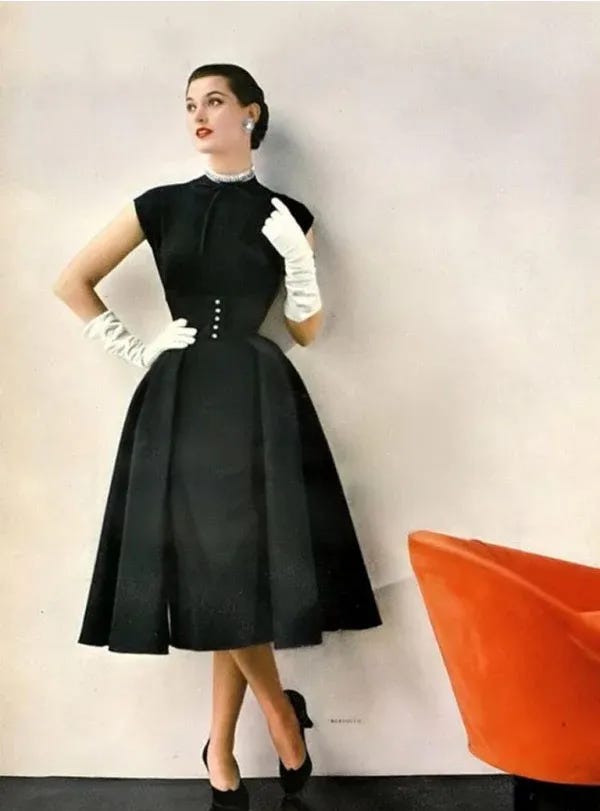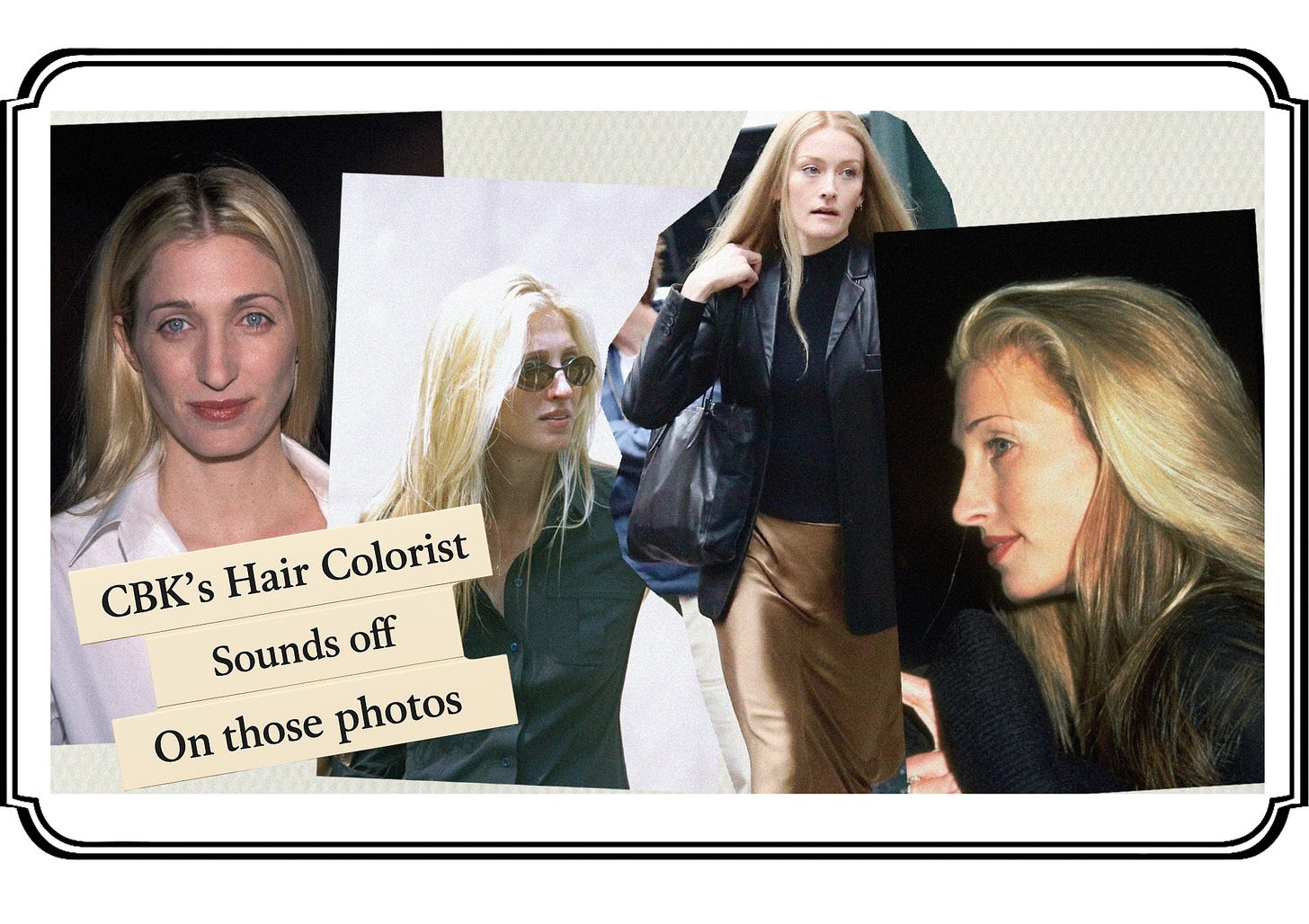How to Do Summer Like It’s 2002, Per Lilah
Plus, more vintage shopping and culture recommendations for the week.
This week’s recommendations: It’s the first official weekend of summer, which means my mind’s on sun-warmed skin, after-dark glamour, and Tom Ford’s slinkiest designs for Yves Saint Laurent. (See below for the golden caftan that closed his Spring 2002 show—an exit worthy of a Roman empress on holiday in Tangier.) Elsewhere, I’m spotlighting the ever-elegant Pauline Trigère in this week’s You Really Should Know This—an American couturière with a Parisian eye and a surgeon’s precision. And in culture news: The Gilded Age returns for Season 3 with marriage deals, social coups, and velvet-draped intrigue, while Carolyn Bessette Kennedy’s longtime colorist sounds off—loudly—on those Ryan Murphy wig choices. His verdict? “Totally wrong.” (I have to agree.)
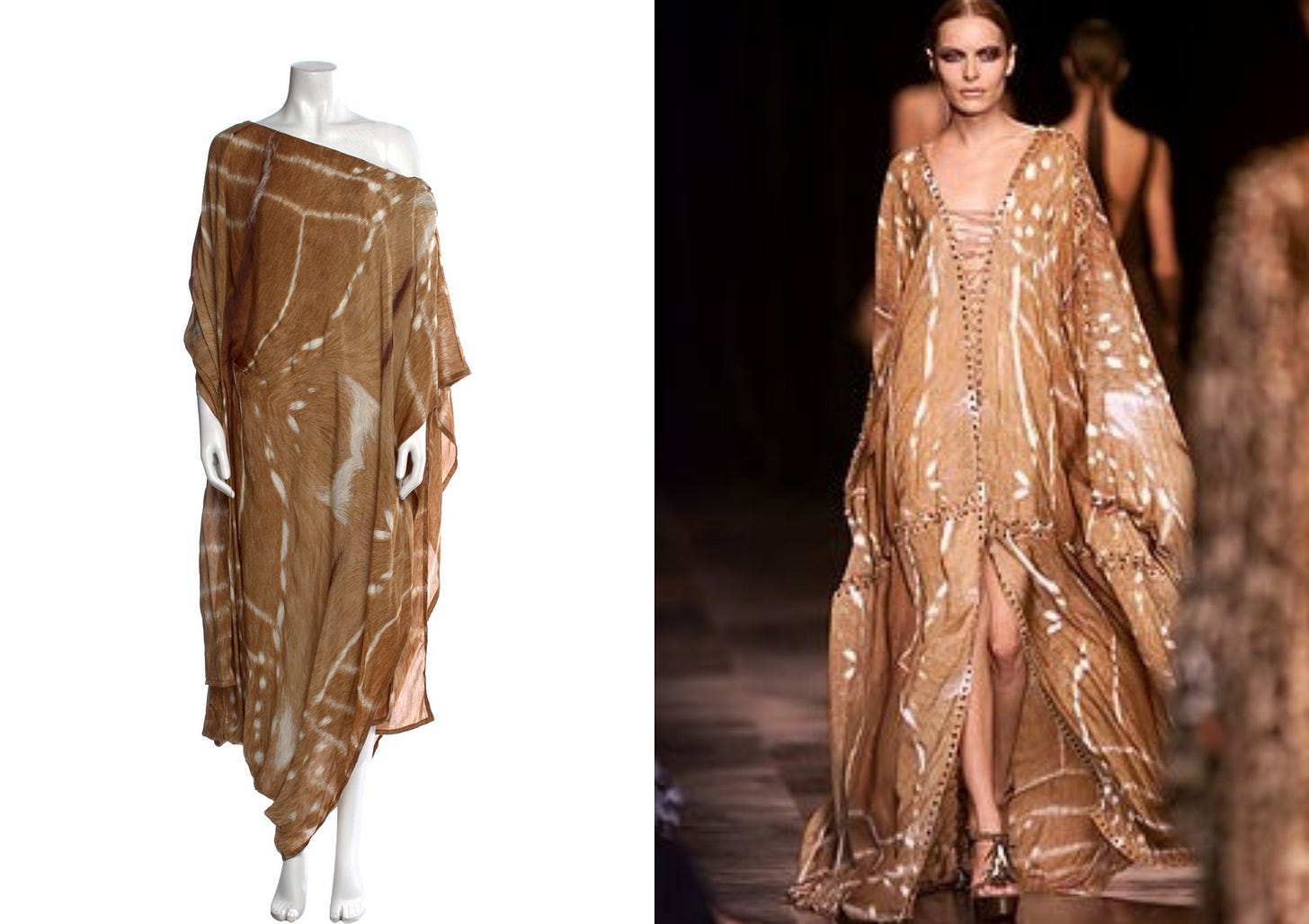
When Tom Did YSL
I’m recommending the finale look from the collection of Spring 2002—Tom Ford’s raved-about designs for YSL Rive Gauche, just one year after his debut at the house (where he’d remain until 2004). This silk caftan dress closed the show in a cloud of sun-faded gold and effortless drama—"worthy of the queen of the jungle,” as Vogue put it. Gwyneth Paltrow wore a variation for her March 2002 Vogue cover; Alicia Keys wore it to the 2001 VMAs. And now? It’s for sale. The girls may be too busy with vintage Gucci by Tom—but this is his Saint Laurent masterpiece.

Tie-Dye, But Make It Prada
From Prada’s landmark Spring 2004 collection—her ode to nostalgia done with knowing subversion—this red-and-blue shirtwaist dress (Look 15 on the runway) is the perfect early summer piece. I am not, nor will I ever be, a fan of tie-dye. But in the capable hands of Miuccia? It becomes chic, ironic, even elegant. On the runway, it was styled with a matching cardigan and belted neatly at the waist—an outfit made for walking tours, train rides, and long museum lunches. Just the thing for a summer spent in motion.

A Stripe Situation
From Versace’s free-spirited Spring 1993 collection—yes, the one with those infamous bell-bottoms—comes this sharp red-and-white blazer, worn on the runway by Naomi Campbell (Look 47). While the season was heavy on boho silhouettes and printed silks, this razor-cut jacket proves Gianni hadn’t lost his taste for tailored punch. Medusa buttons, carnival stripes, and a collar made for turning heads. Equal parts ringmaster and Riviera.
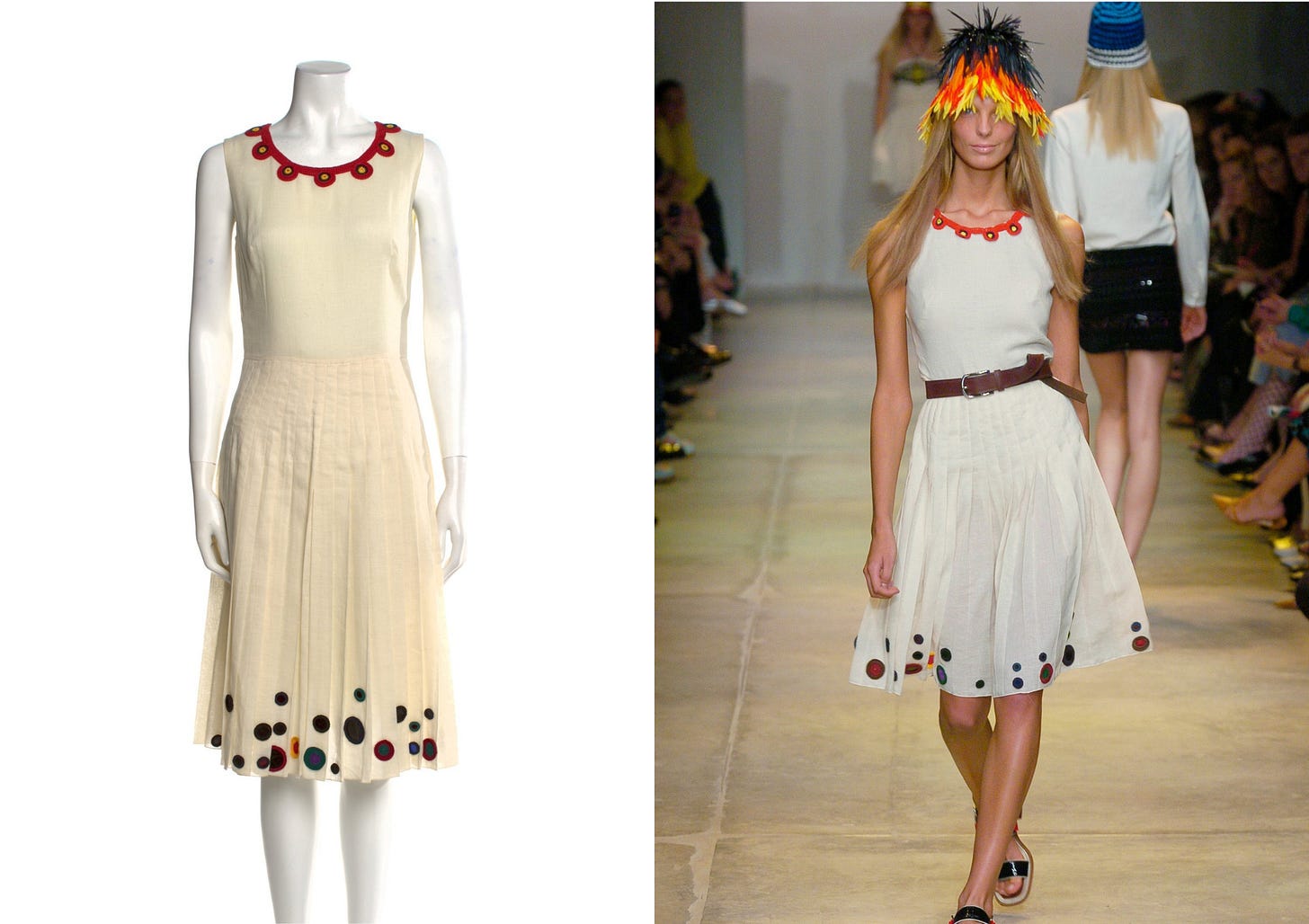
Spots of Genius
My second Prada pick this week is a reminder of Miuccia’s talent for making the offbeat feel inevitable. Look 38 from her Spring 2005 collection—worn on the runway by Daria Werbowy—features playful appliquéd circles at the hem and neckline, yet somehow reads as minimalist. Nearly 20 years later, the silhouette still looks shockingly modern: a tailored bodice, a softly pleated skirt, and all those artful details that reward a second glance. Proof that when Prada does whimsy, it’s never precious.

The Trigère Twist
This week’s You Really Should Know This (below) honoree, Pauline Trigère, is best remembered for the sharp tailoring and swing coats that defined American elegance in the mid-century—think Patricia Neal in Breakfast at Tiffany’s. But her long career extended well beyond the 1950s, and these two later pieces prove her mastery of carefree glamour. A striped tent mini from the ’80s and a boldly printed silk maxi from the ’70s both suggest a more relaxed Trigère—one who trades Manhattan soirées for aperitifs on a Mediterranean terrace.
More Vintage Things—No Context Needed




You Really Should Watch This: The Gilded Age, Season 3
Backstabbing at the opera, fortunes won and squandered, and marriage proposals fit for a Vanderbilt—Julian Fellowes’s The Gilded Age returns this Sunday, June 22, on HBO, and it’s every inch the decadent drama we deserve.
Bertha Russell (played to scene-stealing perfection by Carrie Coon) is fresh from winning New York’s infamous opera war, but don’t expect her to rest on her laurels—or her crushed velvet chaise. She’s gunning for higher social spoils, and her daughter’s romantic prospects are part of the bargain. Across the street, the gloves are off at the van Rhijn house, where Ada (Cynthia Nixon) is newly rich and no longer meek, much to sister Agnes’s (Christine Baranski) withering horror.
Expect whispers, waltzes, and more than one gilded dagger sheathed in silk. It's Newport, it’s New York, and it’s not to be missed.
Airs Sundays at 9 p.m. ET on HBO and streams on Max.
You Really Should Know This: Pauline Trigère
Before there was Donna or Diane, there was Pauline.
Pauline Trigère, the Paris-born, New York-made couturière, may be best remembered for her prim 1950s swing coats and ladylike tailoring—the kind that dressed Patricia Neal in Breakfast at Tiffany’s—but her legacy is so much richer, spikier, and more enduring than just that. Trigère was a pioneer, a perfectionist, and a character. She draped like Chanel, cut like a surgeon (which she once considered becoming), and wore nothing but her own designs, always punctuated by her signature turtle pins and a slick of red lipstick—applied, as she famously requested, even in death.
She arrived in New York in 1937, intending only to stop over en route to Chile. But New York had other plans. By 1942, she launched her first collection with her brother Robert, and by 1949, she had already won a Coty Award. She’d go on to win several more, and in 1959, become the first woman inducted into Coty’s Hall of Fame. Her methods were as distinctive as her voice: she didn’t sketch. Like her spiritual predecessor Madeleine Vionnet, she sculpted dresses directly on the body, cutting from bolts of fabric and conjuring form from instinct.
Trigère was exacting. She ruled her showroom with wit and tyranny (her words), once dismissing a fan who bragged about wearing a Trigère dress for 25 years with, “Just what am I to do with that piece of information?” But she was also ahead of her time. In 1961, she became the first major American designer to hire a Black model. And while she never remarried after her husband left her with two young sons, she described her life as filled with “longstanding friendships”—don’t say “beaux,” she hated that word.
Her career spanned over five decades and included everything from perfume and scarves to eveningwear and men's ties. She famously gave commentary during her own fashion shows, often with Rabelaisian flair. ("You can see the boobs better," she once remarked of a particularly low-cut dress.)
Trigère closed her business in 1994, but her legacy continues to ripple through fashion—visible in any elegant coat with no visible seams, any American label that aims for European chic, any designer who leads with instinct instead of mood boards.
She died in 2002, at 93, ever her own best model and fiercest advocate. “Fashion is what people tell you to wear,” she once said. “Style is what comes from your own inner thing.”
And Pauline? She had style in spades.
You Really Should Read This: CBK’s Colorist on Those Ryan Murphy Images
The first images from American Love Story: JFK Jr. & Carolyn Bessette sent the internet into a tailspin—chiefly over the hair. In this deliciously detailed Vogue exclusive, writer Margaux Anbouba consults Brad Johns, the very colorist who created Carolyn’s iconic buttery blonde in the ’90s. His verdict on the show’s take? “Totally wrong.” Sarah Pidgeon’s hair is a flat, ashy platinum—closer to Gwen Stefani than the sun-kissed, toffee-hued “child-of-the-beach” tone Johns pioneered with face-framing highlights and hidden foils for updos. He’s horrified, we’re fascinated—and Carolyn is presumably spinning in heaven. A must-read for anyone who cares about fashion history, cultural accuracy, or the integrity of a highlight.











